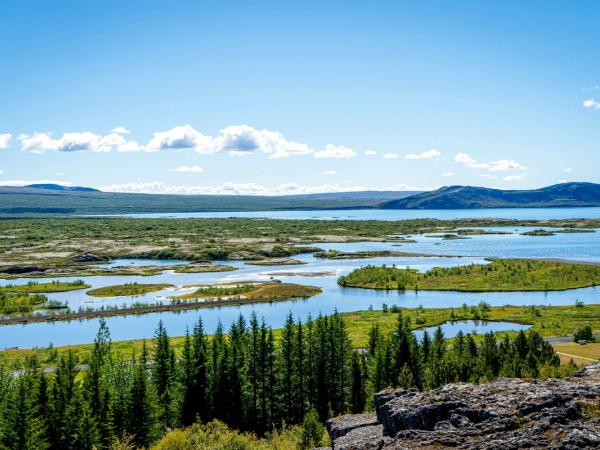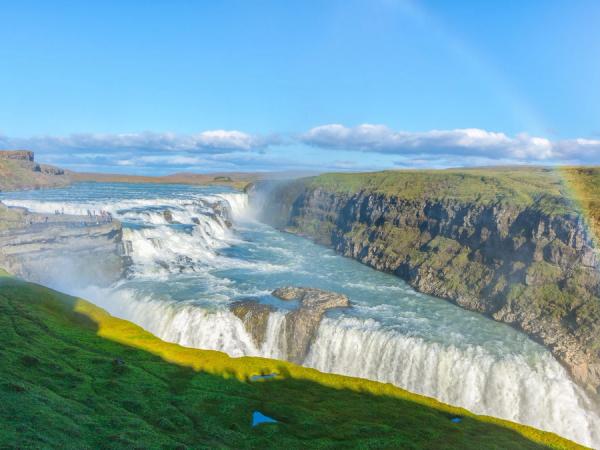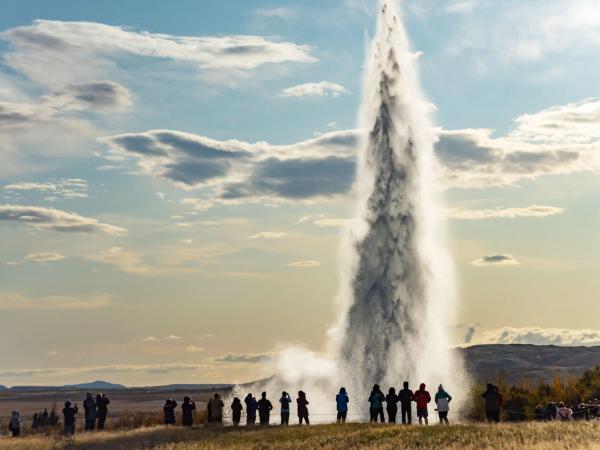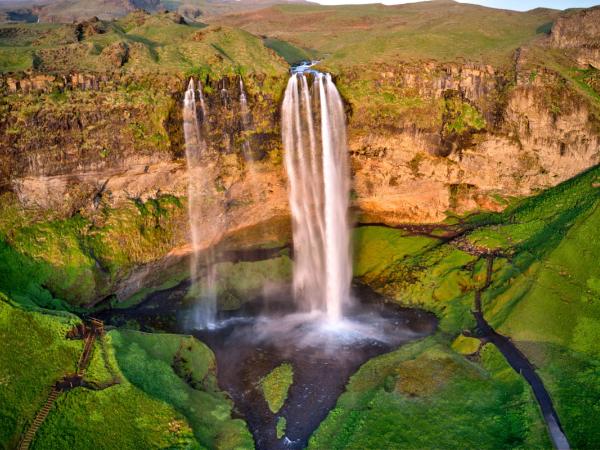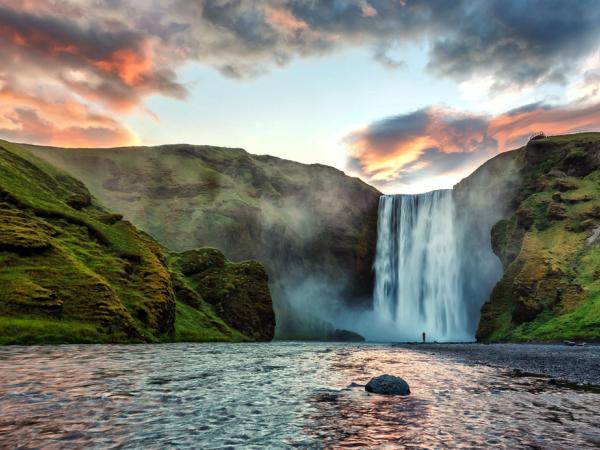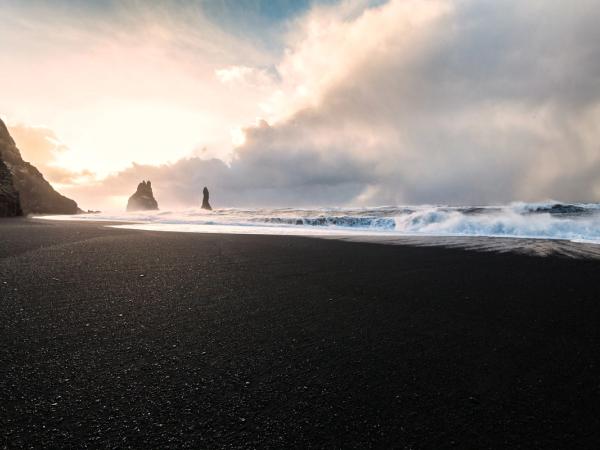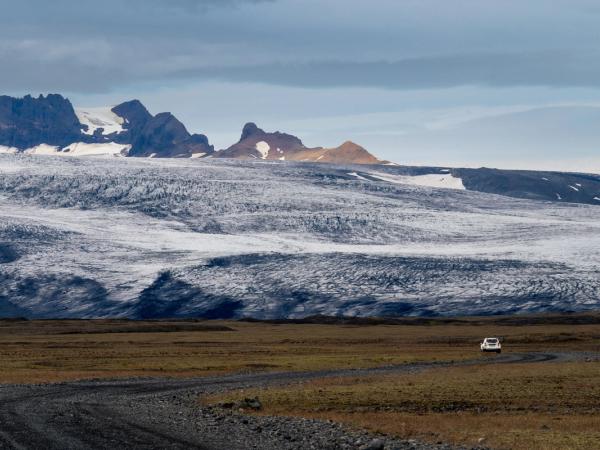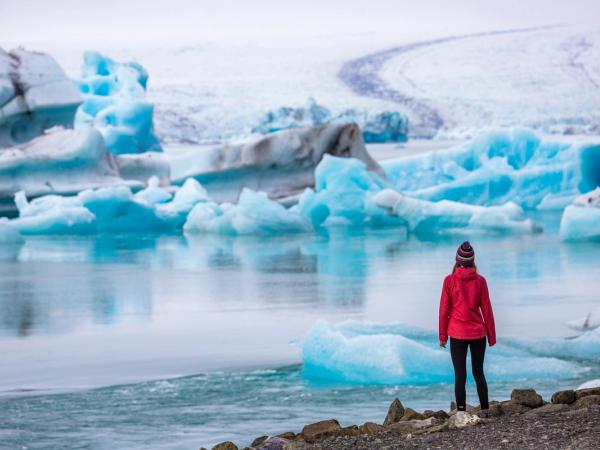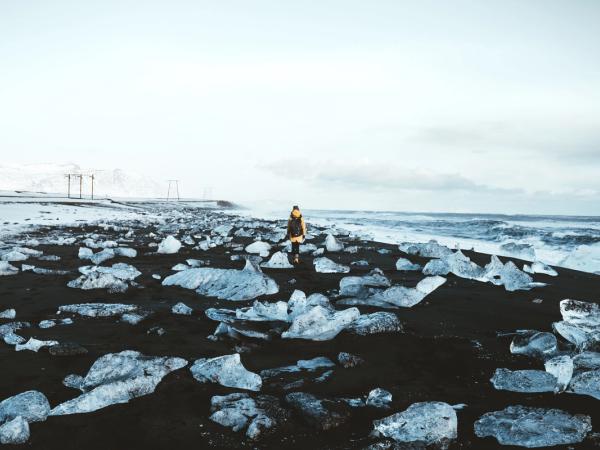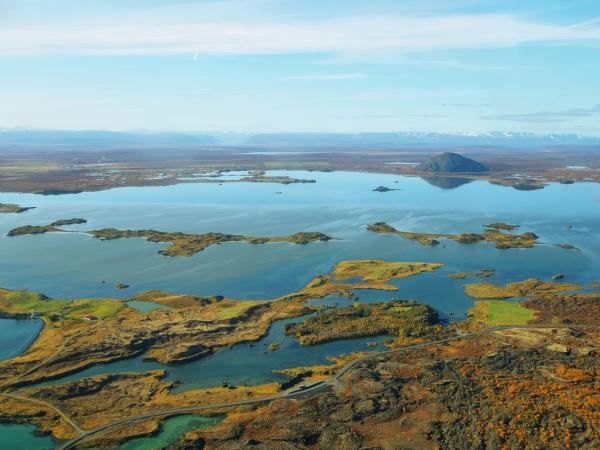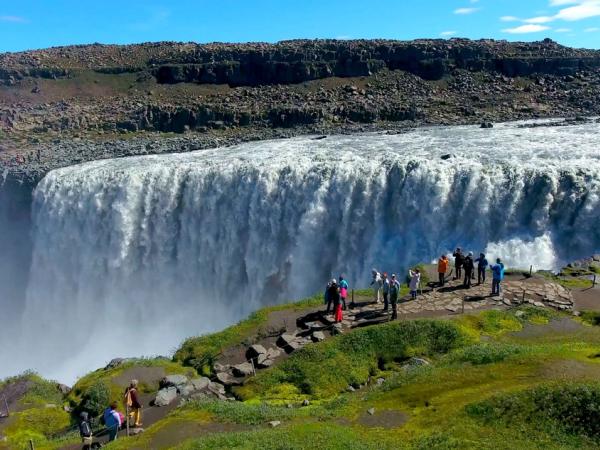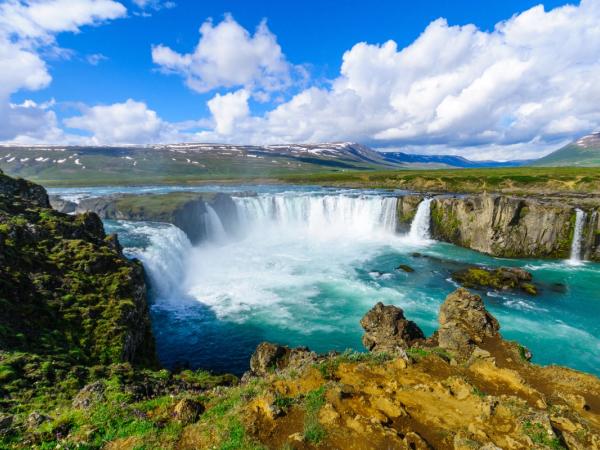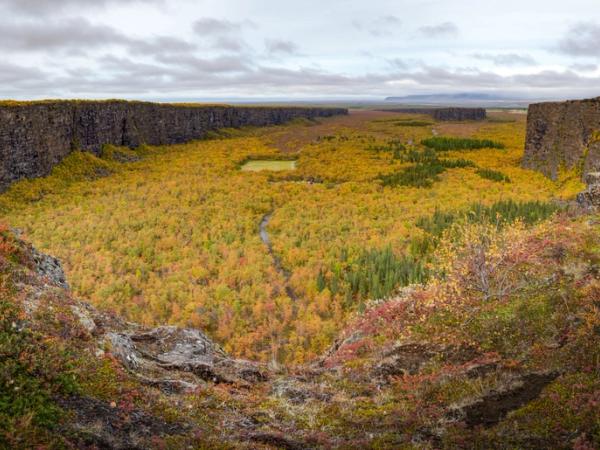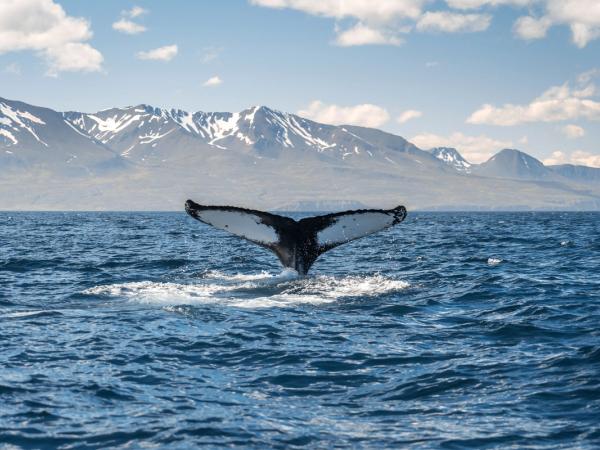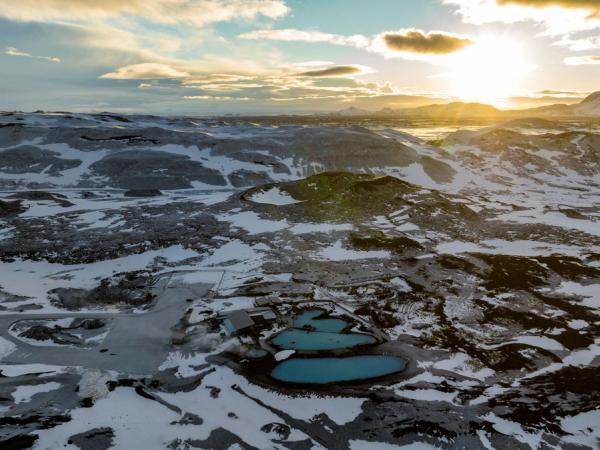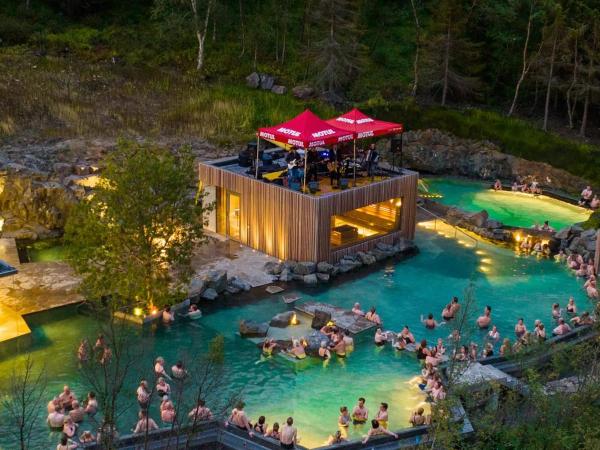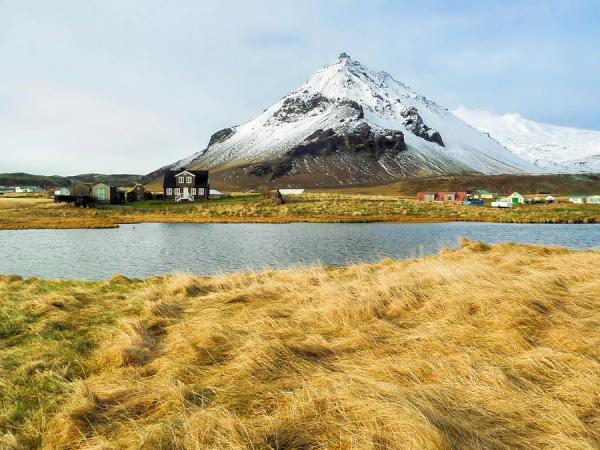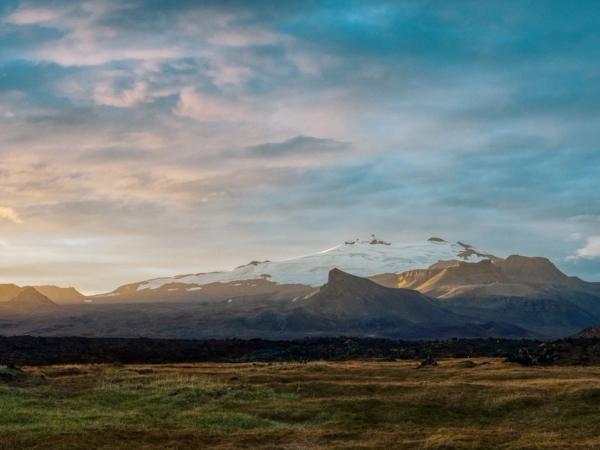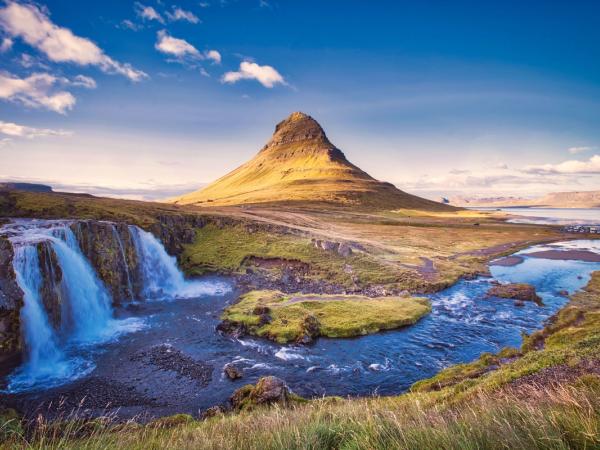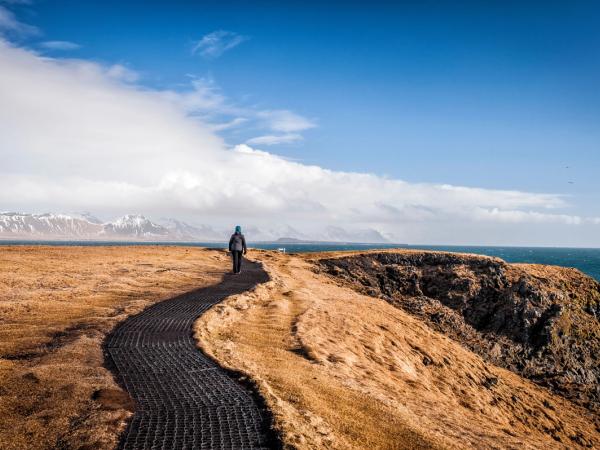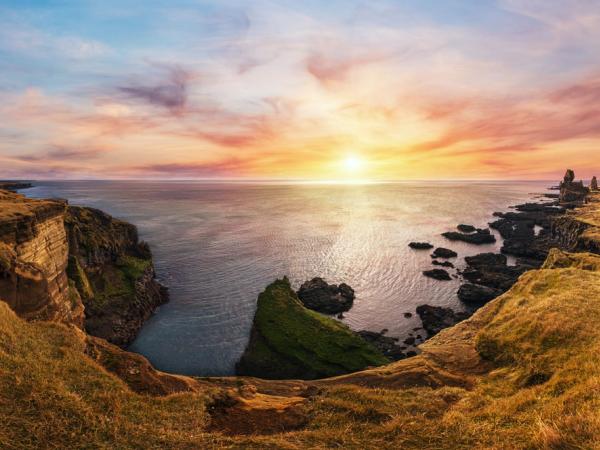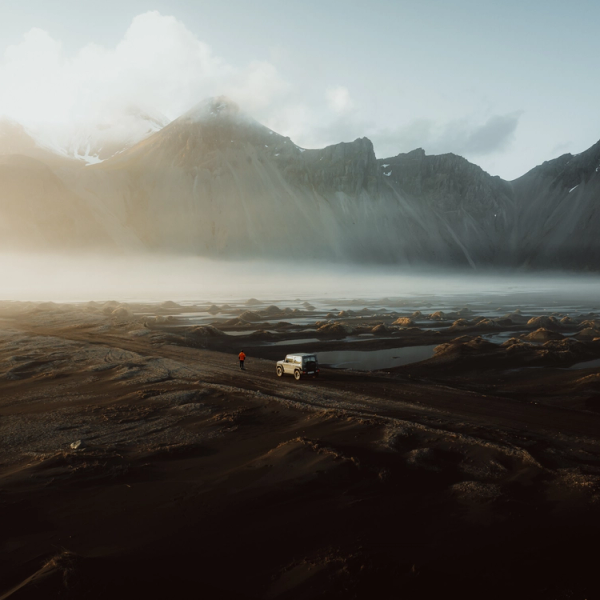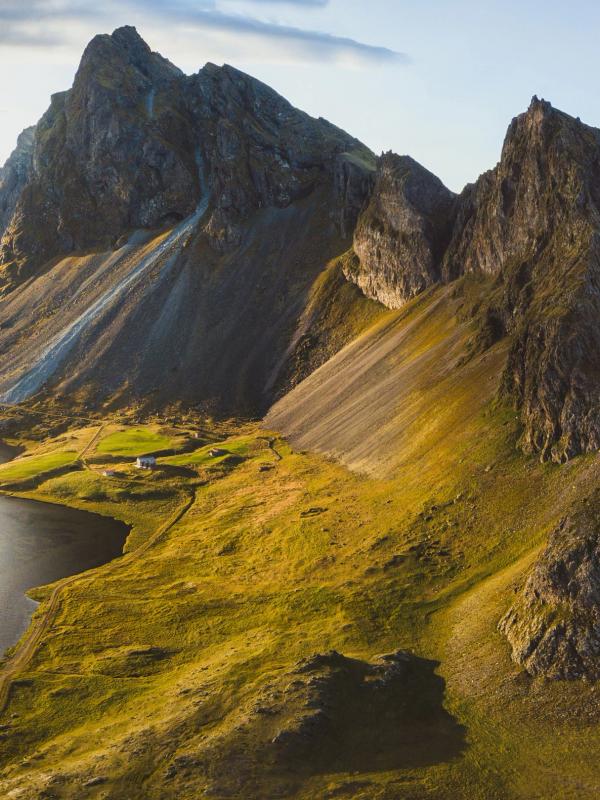
Iceland 7-Day itinerary: Making The Most of Your Trip
When we travel, we all like to enjoy the place we’re visiting to the fullest. But we often find ourselves short of time, which has become a luxury nowadays. Sometimes, it’s impossible to see and do all we want, as our schedule and our budget limit us. Especially when our destination is a place full of magical places, all of them worth a visit, like Iceland. There are many things here that are not short of spectacular: glaciers, volcanoes, waterfalls, geothermal baths, and much more.
However, you can still see a lot with a limited amount of time. Many experts say that having a week provides plenty of time to discover many of the best places there are in Iceland. With just 7 days in this magical country, you can explore volcanic craters, geysers, glaciers, black sand beaches, and quaint fishing villages, all while immersing yourself in the local culture.
In this guide, we will propose a detailed 7-day itinerary that will guide you through the best of Iceland, taking you from the iconic Golden Circle to the remote beauty of the North.
Key takeaways
- The best way to get around Iceland is by car. Renting a car will allow you to see everything at your own pace.
- This itinerary takes Reykjavik as the starting point and circles the country anti-clockwise.
- It’s essential to check the weather forecast and road conditions regularly to adapt the itinerary if necessary.
To be able to enjoy this itinerary, we’re counting seven full days. If you’re arriving, for example, on a late Monday evening and leaving Iceland that same week on Sunday morning, we can’t consider that as seven days. You’ll still be able to make most of this itinerary, but perhaps you’ll have to adjust your plans. Everything you’re going to see here is worth discovering properly, not in a rush.
Overview of the 7-day Itinerary
Day 1: Golden Circle
- Þingvellir National Park
- Geysir Geothermal Area (Strokkur Geysir)
- Gullfoss Waterfall
- Optional stops: Bruarfoss Waterfall, Laugarvatn Fontana Spa
Day 2: South Coast
- Seljalandsfoss Waterfall
- Skógafoss Waterfall
- Reynisfjara Black Sand Beach
- Village of Vík
Day 3: Vatnajökull and Jökulsárlón Glacier Lagoon
- Vatnajökull National Park
- Glacier hiking or ice cave tours
- Jökulsárlón Glacier Lagoon
- Diamond Beach
- Town of Höfn
Days 4 and 5: The Diamond Circle and Northern Iceland
- Lake Mývatn
- Dimmuborgir Lava Formations
- Hverir Geothermal Area
- Dettifoss Waterfall
- Goðafoss Waterfall
- Ásbyrgi Canyon
- Húsavík (Whale Watching)
- Mývatn Nature Baths or Forest Lagoon Spa
- City of Akureyri
Day 6: Snæfellsnes Peninsula
- Snæfellsjökull National Park
- Kirkjufell Mountain and Kirkjufellsfoss Waterfall
- Coastal walk between Arnarstapi and Hellnar
- Lóndrangar Basalt Cliffs
Day 7: Reykjavík
- Hallgrímskirkja Church
- Harpa Concert Hall
- National Museum of Iceland or Saga Museum
- Reykjavík Art Museum
- Explore local restaurants, bars, and cafés
Day 1: Golden Circle
We will get fully immersed in some of the things that have made Iceland famous from the beginning of the trip. Your adventure begins with Iceland’s famous Golden Circle, a route that takes you to some of the country’s most well-known natural landmarks. This would be the perfect introduction to Iceland’s unique landscapes and history. This scenic loop connects three major sites that can be completed with secondary stops.
Start your day by heading to Þingvellir National Park, one of the three national parks in Iceland. This UNESCO World Heritage site is both a natural wonder and a place of historic significance. Here’s where Iceland’s parliament -the Alþingi or Althing- was first established in the year 930. But it's not just the history that will captivate you here. Þingvellir sits in a rift valley where the North American and Eurasian tectonic plates meet. You can swim underwater, touching both plates simultaneously in the Silfra Fissure. Or walk between the two continents in the Almannagjá Gorge above ground. Don’t miss out on Öxarárfoss Waterfall and Þingvallavatn Lake.
Next, drive to the Geysir Geothermal Area. The area is named after the Great Geysir, which shoots water up in the air as high as 38 meters (122 feet), although it’s mostly dormant these days. Luckily, the Strokkur Geysir steals the show, erupting every 5-10 minutes, sending boiling water up to 20 meters (65 feet) into the sky. The area is filled with bubbling mud pots and steaming fumaroles, showing the intense geothermal activity in this zone.
The third main stop of the Golden Circle is Gullfoss, a waterfall that’s as powerful as it is beautiful. This waterfall is known for the effect the sun's rays create on the mist, generating a rainbow effect.
You can add more stops within the Golden Circle. On your way from Þingvellir to Geysir, you can stop in Bruarfoss, another astonishingly beautiful waterfall. You can also relax after a full day of exploring in the Laugarvatn Fontana, a beautiful geothermal spa.
You can settle in for the night at one of the many guesthouses or hotels in the area, getting ready for more adventures.
Day 2: South Coast
We continue our trip along the Ring Road, or Route 1, which is the backbone of Iceland’s road system and the one used for most of our itinerary. The South Coast is one of Iceland’s most iconic regions, with its gorgeous waterfalls, black sand beaches, and dramatic cliffs creating amazing backdrops for photography.
Start your day by visiting Seljalandsfoss, one of the most famous waterfalls in the country. But not only that. What makes Seljalandsfoss so unique is that you can walk behind the waterfall, getting a view of the area like no other. Be prepared to get a little wet, but the experience is well worth it. Seljalandsfoss is 60 meters (196 feet) tall.
Not far from Seljalandsfoss, we can find another fantastic waterfall: Skógafoss. Similar in size to Seljalandsfoss (but much stronger), it’s an impressive water drop, especially up close. You can walk right up to the base of the falls to feel the power of the water. You can also climb the staircase beside the waterfall to a platform from where you can get amazing views of the coast and the river below.
Continuing along the coast, we now arrive at Reynisfjara Beach, one of the most beautiful black sand beaches in the world. With its dramatic basalt columns, roaring Atlantic waves, and the sea stacks of Reynisdrangar rising from the ocean, this place feels almost mythological. Take a walk along the beach, but be cautious of the waves, which can be dangerous if you get too close to the water.
For the night, a good idea could be staying in the nearby village of Vik. It’s a nice little town with a few cozy guesthouses and hotels. It’s also the perfect spot to buy things you might need on your trip and fuel up.
Day 3: Vatnajökull and Jökulsárlón Glacier Lagoon
As you move further east, you’ll be entering the realm of glaciers, icebergs, and vast wilderness. This area is much of what has given the ice to the name of Iceland.
The first stop on this day will be Vatnajökull National Park, the largest national park in Europe and home to the largest glacier on the continent. It takes its name from the glacier that crowns the area. You can see and learn about glaciers here, as there are tours available that allow you to hike on the ice.
Another great option is to take part in an ice cave tour. This experience is highly recommended, as the guide will take you inside the glacier, where different caves are formed each winter. The colors and textures you’ll see there will make it feel like a place from a different world.
From there, head to another fantastic location that is, technically, still inside of Vatnajökull National Park: Jökulsárlón Glacier Lagoon. The main feature of this place is that you can see big chunks of ice that have separated from the glacier floating in the water before drifting out to the sea. The colors of these little icebergs range from pure white to deep blue, depending on how long they’ve been exposed to the air. You can take a boat tour to get closer to the icebergs or walk along the shore and watch them. There's a chance you spot seals here.
Just across the road is Diamond Beach, where pieces of ice end up after passing through the lagoon. There, they create an amazing contrast between the blue of the ice and the black sand. It’s a beautiful spot to take a stroll and snap some incredible photos.
After a day filled with icy wonders, drive to the town of Höfn for the night. Höfn, a little further east on the Ring Road, is a small fishing village known for its fresh seafood, especially lobster.
Days 4 and 5: The Diamond Circle and Northern Iceland
The following day, we’re traveling to North Iceland. We have divided the next part of the journey into two days. First, because there’s a lot to see and do here, but also because there’s a three-hour drive from the previous spot. For this reason, it’s advisable to start the day early so you can make the most of it.
Our suggestion for discovering this region is to make the Diamond Circle. It’s a similar route to the Golden Circle in the south, connecting five iconic places of the region.
You can start at Lake Mývatn, an area known for its diverse landscapes and geothermal activity. Spend some time exploring the lava formations at Dimmuborgir, which in Icelandic means “Dark Castles” because they can look like that from a distance. You can also visit the nearby Hverir geothermal area, where steaming fumaroles and bubbling mud pots create a unique landscape.
There are two waterfalls in the Diamond Circle. Both are impressive, but for different reasons. There’s Dettifoss, Europe’s second most powerful waterfall. In fact, it’s nicknamed “The Beast.” The sheer force of the water as it crashes into the canyon below is something to be witnessed. There are two viewing platforms in Dettifoss, one on each side of the river. Both offer incredible views, but the eastern side is generally easier to access.
The other one is named Goðafoss, also known as the "Waterfall of the Gods." It gets its name because here, in the year 1000, lawspeaker and local chieftain Þorgeir Ljósvetningagoði decided to convert to Christianity. The most distinctive feature of Goðafoss is the color of the water, of a vivid turquoise hue, creating a magical atmosphere.
The fourth stop in the Diamond Circle is Ásbyrgi Canyon, a striking geological feature. This horseshoe-shaped canyon is not only beautiful but also a place steeped in Norse mythology. According to the legend, the canyon was formed when Sleipnir, Odin’s eight-legged horse, struck the land here with its hoof.
Day 5
If you are interested in whale watching, you must go to Húsavík. This charming little town, often called the “Whale Watching Capital of Iceland,” has many boat tours departing from its harbor. This way, you can see these huge mammals up close, including orcas, humpback whales, and, if you’re lucky, the elusive blue whale.
This area also has two great spots to relax and unwind after a day of exploration. The Mývatn Nature Baths, really close to the lake with the same name, offer a perfect opportunity to take a bath in warm, mineral-rich waters. Known as the “Blue Lagoon of the North,” these baths are quieter and less crowded than their southern counterpart.
You also have the option of going to the Forest Lagoon, a beautiful and recently-opened spa in the middle of a gorgeous forest.
It’s quite recommendable to use Akureyri as your base to explore this region. It’s the second largest city in Iceland, so it has more options for accommodation and eating out. There are many things to do here. Take a stroll through the city center, and if you're visiting in summer, don't miss the Akureyri Botanical Garden.
Our recommendation is to head west on the afternoon of the second day and spend the night at the next stop.
Day 6: Snæfellsnes Peninsula
Our next stop is in West Iceland. We are discovering the Snæfellsnes Peninsula, often called “Iceland in Miniature,” because it contains a little bit of everything that has made Iceland famous: glaciers, volcanic craters, black sand beaches, and nice fishing villages.
The main place in this region is, without a doubt, Snæfellsjökull National Park. Almost everything worth seeing in this zone is inside of it. This place is named after an ice-capped volcano that is not only impressive but also a place of literary fame because this mountain inspired Jules Verne’s Journey to the Center of the Earth.
Next, go to Kirkjufell, a mountain that has become one of the most photographed spots in Iceland. Its distinctive shape and the nearby Kirkjufellsfoss waterfall create a sensational scene, especially during the golden hours of sunrise and sunset.
A highlight of this day is the coastal walk between Arnarstapi and Hellnar, two small villages located along the rugged cliffs of the south coast of the peninsula. You can also go to Londrangar, two massive basalt rock pinnacles that rise dramatically from the sea.
After a full day of exploring, head back to Reykjavik for the night, where you’ll be able to enjoy some city life after your time in the wilderness.
Day 7: Reykjavik
We will dedicate your final day to Reykjavik, the vibrant capital city that blends modernity with tradition in a unique way. The first stop in the morning is Hallgrímskirkja, a large church that is probably the most recognizable building in Iceland.
Next, head to the Harpa Concert Hall, a stunning building made of glass and steel that reflects the light in mesmerizing ways. It’s not only an architectural gem but also the cultural heart of Reykjavik, hosting concerts, plays, and other events.
For those interested in history, the National Museum of Iceland or the Saga Museum offers fascinating insights into the country’s Viking past and cultural heritage. If art is more your thing, Reykjavik is home to several contemporary art galleries, such as the Reykjavik Art Museum.
The city has a lot of great restaurants, bars, and cafes where you can enjoy some local food and discover the active nightlife of the city.
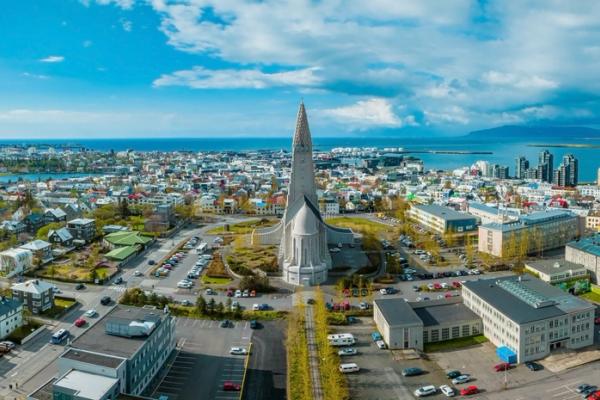
Alternatives for Some Days
The proposed itinerary will take you around the country, stopping at several magnificent places. However, you won’t be able to see everything this country offers, which is a lot. You can add or remove parts of it at your convenience. You can also change some of them and add other places, so here are a few alternatives, just in case.
- Westfjords: For those looking to escape the crowds and experience some of Iceland’s most remote and wild landscapes, the Westfjords are an incredible option. This region’s dramatic fjords, towering cliffs, and little-visited villages offer a sense of peace and isolation that’s hard to find elsewhere. This area is quite remote, and it takes a while to get there. Also, it can be difficult to travel there in winter.
- Reykjanes Peninsula: Just a short drive from Reykjavik, the Reykjanes Peninsula is home to the famous Blue Lagoon and many other geothermal wonders. You can visit the boiling mud pots at Gunnuhver, walk across the Bridge Between Continents, or hike to the dramatic sea cliffs at Valahnúkamöl.
- East Fjords: This region is not as visited as others but is still full of beauty. You’ll have to cross the area if you follow our itinerary, just between Höfn and the Diamond Circle. The fjords are beautiful and dotted with charming fishing villages.
Travel Tips for 7 days in Iceland
- Be prepared for the weather: Iceland’s weather is famously unpredictable and can change at a moment’s notice. Wear layers to adapt to these changes, and finish with a waterproof jacket and pants. Also, a good pair of sturdy boots is essential, as rain, wind, and sunshine can all happen within a single day.
- Check the forecast and the road conditions: As the weather changes so much, check the forecast every morning before starting your day to be able to adapt to it. Also, as you travel by car, check the road status, as many can close due to adverse weather.
- Drive cautiously: If you’re driving the Ring Road, rent the right vehicle for the season. A 4x4 car is recommended for winter or if you’re going to the Highlands or other secondary unpaved roads. Drive cautiously, as many roads are narrow and prone to sudden changes in weather.
- Fuel up: There are usually gas stations in all main cities in Iceland. However, they can become scarce in rural areas or certain regions. Fill up your tank and buy snacks or food when you can avoid unpleasant surprises.
- Travel sustainably: Stick to marked trails to protect Iceland’s delicate landscape, and always follow the "leave no trace" principle.
Conclusion
A week in Iceland is enough to experience some of the country’s most amazing places, from its impressive waterfalls and black sand beaches to its vast glaciers and geothermal wonders. Whether you stick to the classic routes or venture off the beaten path, Iceland’s natural beauty will leave you with unforgettable memories.

